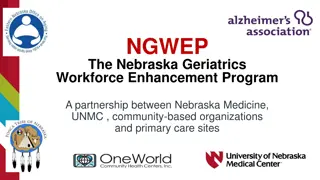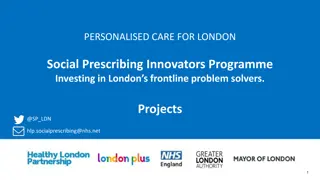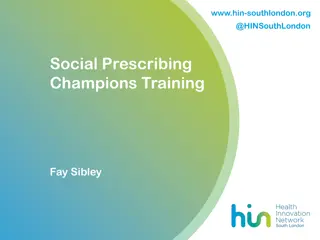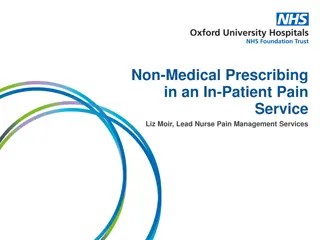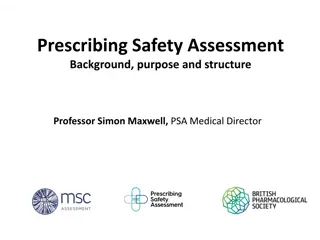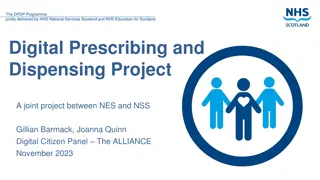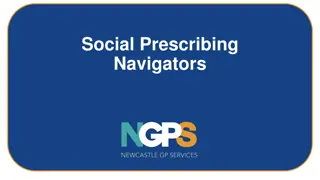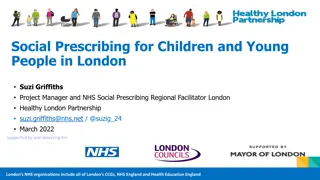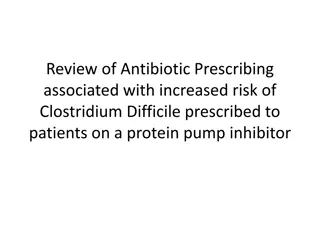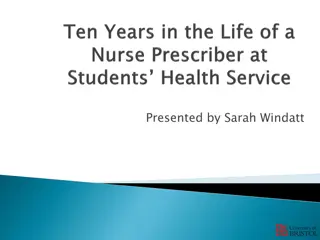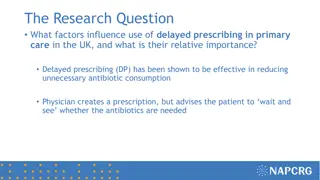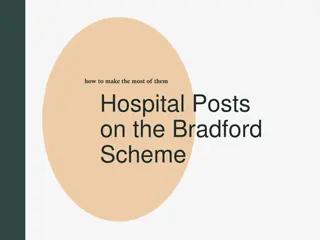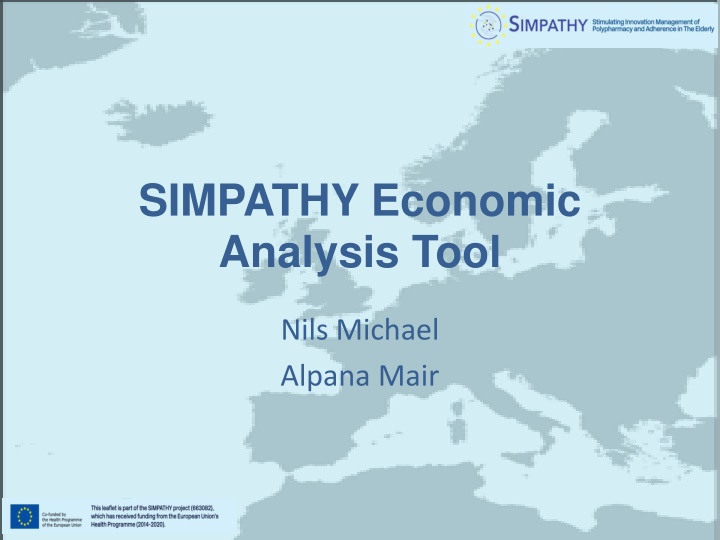
Economic Analysis Tool for Polypharmacy Reviews: SIMPATHY Overview
"Discover SIMPATHY, an economic analysis tool for polypharmacy reviews, providing insights on costs, benefits, and avoided hospital admissions. Explore key products, user interface features, and inputting local data. Gain an overview of result outputs and population insights. See how this tool benefits healthcare analysis." (293 characters)
Download Presentation

Please find below an Image/Link to download the presentation.
The content on the website is provided AS IS for your information and personal use only. It may not be sold, licensed, or shared on other websites without obtaining consent from the author. If you encounter any issues during the download, it is possible that the publisher has removed the file from their server.
You are allowed to download the files provided on this website for personal or commercial use, subject to the condition that they are used lawfully. All files are the property of their respective owners.
The content on the website is provided AS IS for your information and personal use only. It may not be sold, licensed, or shared on other websites without obtaining consent from the author.
E N D
Presentation Transcript
SIMPATHY Economic Analysis Tool Nils Michael Alpana Mair
Background Provides a high-level analysis of economic costs and benefits of polypharmacy reviews Basis is Scottish Polypharmacy Model, but facility to apply EU28 population data and input own data for key variables Key results are: Avoided cost of net drug reduction Avoided hospital admissions associated with Adverse Drug Reactions (ADR) Set against (staff) cost of implementing reviews
Key products available on www.simpathy.eu Economic Analysis tool (Excel based) User guide (pdf), incl. Detailed explanation of the tool Model and methodology Case studies for Scotland & Northern Ireland Simulation results Literature review of associated avoidable Adverse Drug Reactions (ADRs) Hand-out containing Consortium country demonstrations
User Interface Country and population data Risk stratification Option to add local data Review setup, incl. Staff cost Charge per review Estimated DDD started/ stopped Choice variables, incl. Cost of DDD Admission rates Bed day cost
Inputting local data Example: minutes per review by staff type and activity
OVERVIEW OF RESULT OUTPUTS EXAMPLE SCOTLAND
Population Country Scotland Activity is driven by the selected population for whom reviews are intended to be carried out. Population sex (M/F/Total) Total Population age group Minimum Maximum 65 80 Tool also provides forecast of selected population group to 2030. No risk stratification Risk stratification BNF10+ & High Risk Med 31,693 BNF 5-9 & High Risk Med 35,495 BNF10+ BNF 5-9 702,559 32,453 36,807
Time and cost implications of reviews Costs of reviews are based on the resource (staff) cost of carrying out a review, net of any potential review charge. Minutes per review GPs (Primary Care Doctors) Other doctors Pharmacists Nurses Minutes 30.00 Cost per review GPs (Primary Care Doctors) Other doctors Pharmacists Nurses Total 30.76 0.00 47.31 0.00 78.07 0.00 75.00 0.00 Risk stratification No risk stratification BNF10+ & High Risk BNF 5-9 & High Risk Total cost of reviews BNF10+ BNF 5-9 Med m 2.47 Med m 2.77 m m m Total cost of reviews 54.85 2.53 2.87 Review charge reclaimed 0.00 0.00 0.00 0.00 0.00 Net total cost of reviews 54.85 2.53 2.47 2.87 2.77
Avoided drug and bed day costs The direct potential financial benefit of reviews will consist of the net reduction in drugs prescribed, and associated expenditure. Risk stratification No risk stratification BNF10+ & High Risk Med BNF 5-9 & High Risk Avoided drugs cost BNF10+ BNF 5-9 Med m 7.62 m m m m Drugs cost avoided (DDDs) 150.87 6.97 6.81 7.90 Potential indirect benefits (non-cash releasing) centre around: Potentially avoided ADRs Preventable hospital admissions associated with these ADRs Associated number of hospital bed days avoided. Risk stratification No risk stratification BNF10+ & High Risk Med BNF 5-9 & High Risk Cost of Bed Days (CBD) BNF10+ BNF 5-9 Med m m m m m DBD associated with ADR related hospital admissions, based on central admission estimate 15.49 2.49 2.16 2.61 2.22 CBD associated with definitely avoidable ADR related hospital admissions through PPH, based on central admission estimate 0.84 0.13 0.12 0.14 0.12 CBD associated with central estimate of potentially avoidable ADR related hospital admissions through PPH 5.85 0.94 0.82 0.99 0.84
Additional outputs Graphical representation Snapshot Data collection


